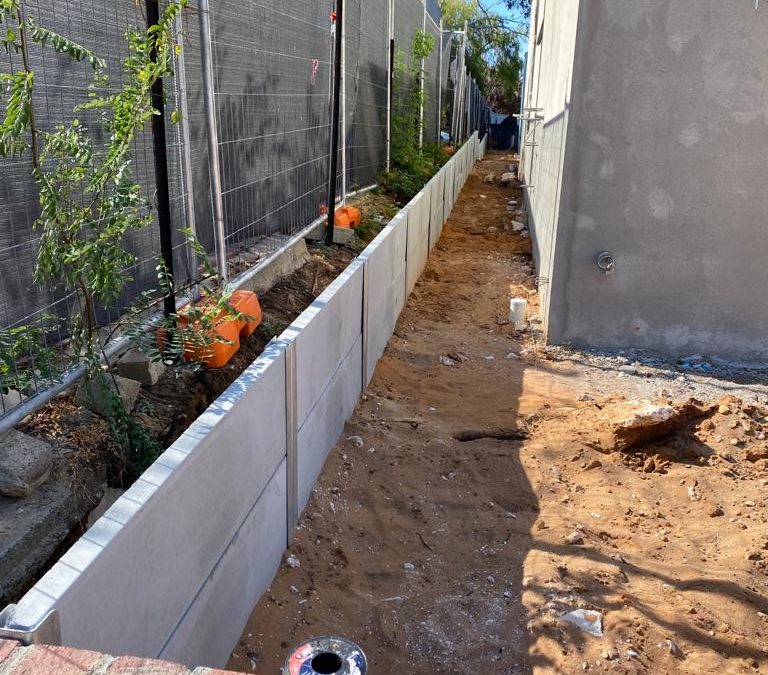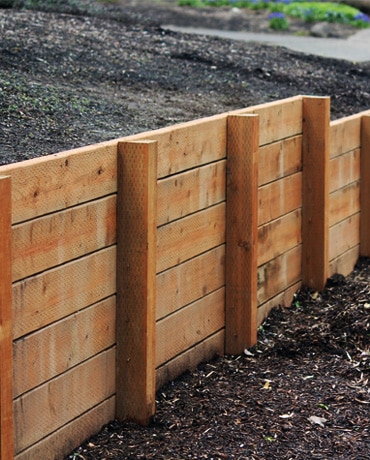Keeping Walls Sunshine Coast: Ingenious Solutions for Erosion Control
Enhancing Home Security: The Duty of Retaining Walls in Soil Retention and Erosion Control
In the world of building monitoring, keeping security and avoiding erosion are extremely important problems for homeowner and developers alike. Preserving wall surfaces stand as silent guardians, playing an essential duty in dirt retention and disintegration control. Their importance expands past mere structural assistance, affecting the general stability and long life of a residential property. By discovering the subtleties of various kinds, layout considerations, construction strategies, and maintenance suggestions related to keeping walls, a deeper understanding of their critical duty in improving home stability arises. The detailed dancing in between design expertise and ecological consistency unveils a compelling story that emphasizes the crucial nature of maintaining wall surfaces in modern-day land monitoring.
Importance of Retaining Walls in Security
The importance of retaining wall surfaces in ensuring stability within landscapes can not be overemphasized. Preserving walls play a vital function in keeping back dirt, protecting against erosion, and creating level surfaces in sloped areas. By providing architectural assistance, keeping walls assist to rearrange lateral pressure triggered by soil, avoiding landslides and slippage. Along with improving the aesthetic allure of a building, retaining wall surfaces add to the total safety and functionality of outside rooms.
Retaining wall surfaces are particularly necessary in sloping or irregular surfaces where dirt disintegration is an usual occurrence. Without sufficient assistance, soil disintegration can lead to the destruction of landscapes, compromising the integrity of structures and posturing risks to citizens. Retaining walls function as obstacles, stabilizing the soil and stopping it from changing downhill throughout hefty rainfall or various other ecological stressors.
Additionally, keeping wall surfaces supply long-term advantages by lowering upkeep expenses related to soil erosion and land instability. By spending in properly designed preserving walls, homeowner can make certain the long life and sustainability of their landscapes while advertising a risk-free and visually appealing environment.

Sorts Of Retaining Walls for Disintegration Control
Gravity keeping wall surfaces are durable structures that count on their weight to resist the stress of the dirt behind them. Cantilever keeping walls, on the various other hand, are created with a thicker base and utilize a lever arm to endure the soil stress.
For taller wall surfaces or where area is a constraint, anchored keeping walls are typically employed. When picking the proper type of retaining wall surface for disintegration control, factors such as soil composition, wall elevation, and site problems must be carefully thought about to guarantee durable stability and effectiveness.
Layout Considerations for Soil Retention
The height and location of the maintaining wall are vital variables that affect the general style. Engineers need to additionally consider the stress put in by the maintained soil and possible lateral tons to ensure the framework's security over time.
Additionally, the material selection for the retaining wall surface is important in improving durability and performance. Concrete, timber, gabion baskets, and all-natural stone prevail materials utilized in retaining wall surface building, each with its distinct benefits and factors to consider. Correct drain mechanisms, such as weep openings and French drains, need to be incorporated into the style to stop water build-up behind the wall, which can result in architectural failure and disintegration.
Construction Strategies for Keeping Wall Surfaces
When applying design factors to consider for efficient dirt retention, the building techniques for keeping walls play an important duty in making certain structural honesty and long-lasting stability. The success of a maintaining wall mostly depends upon the building and construction approaches used. One usual strategy is the gravity wall, which depends on the weight and mass of the wall surface itself to stand up to the pressure of the preserved dirt. Gravity walls appropriate for reduced to tool visit site elevations and are relatively simple to construct. Retaining Walls Sunshine Coast.
An additional extensively utilized building strategy is the cantilevered wall, which makes use of a concrete piece foundation that extends in reverse into the maintained dirt. This design provides additional security and appropriates for medium to high retaining walls. For taller structures, reinforced soil strategies such as the usage of geogrids or soil nails can be utilized to improve the wall's stamina and security.

Maintenance Tips for Home Security
To guarantee lasting residential or commercial property security, normal maintenance practices are necessary for preserving the stability of protecting against and maintaining walls disintegration issues. Checking retaining walls periodically is critical to determine any type of indications of damages, such as cracks, protruding, or leaning. Any kind of issues must be addressed immediately to stop additional degeneration. Cleaning up the surface area of the keeping walls can additionally help keep their structural stability by removing dirt, debris, and plant life that can damage the wall in time (Retaining Walls Sunshine Coast).
In enhancement to aesthetic assessments and cleansing, it is vital to check the drain systems other connected with the retaining wall surfaces. Ensuring that drains are free from obstructions and functioning properly can protect against water build-up behind the wall surfaces, which can result in stress and potential failing. Correctly working water drainage systems are essential for managing water flow and reducing the risk of disintegration.
Regularly checking and maintaining keeping walls according to these tips can prolong their life expectancy and contribute to the overall stability of the residential property.
Final Thought
In conclusion, retaining walls play a vital duty in improving residential property stability by preventing soil erosion and maintaining dirt in place. Routine upkeep of retaining walls is vital to make sure lasting security and protection against erosion.
For taller wall surfaces or where space is a restriction, secured preserving wall surfaces are usually employed. These wall surfaces use cords or strips that are secured right into the dirt or rock behind the wall surface to supply additional assistance. When choosing the suitable type of retaining wall for erosion control, aspects such as dirt make-up, wall height, and website conditions have here are the findings to be thoroughly thought about to guarantee lasting stability and effectiveness.
One common strategy is the gravity wall surface, which counts on the weight and mass of the wall itself to stand up to the pressure of the maintained soil. Cleaning up the surface of the maintaining wall surfaces can also help preserve their architectural integrity by getting rid of dirt, particles, and plant life that can compromise the wall over time.